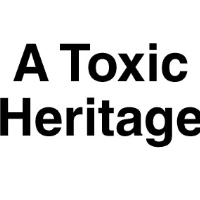San Jose Follows San Diego Lead in Suing Monsanto over PCB Contamination

San Jose has joined San Diego in employing a novel legal approach to wringing some money out of Monsanto to help pay for polychlorinated biphenyl (PCB) pollution in their respective bays caused by the chemical company’s products.
Instead of the time-honored Superfund route used in many of the lawsuits that preceded them, the cities are suing the company as a public nuisance. As the San Jose lawsuit (pdf), filed last month, states: “An ordinary person would be reasonably annoyed or disturbed by the presence of toxic PCBs that endanger the health of fish, animals, and humans and degrade water quality and destroy marine habitats.”
“Annoyed or disturbed,” at the very least. The U.S. Environmental Protection Agency (EPA) says, “PCBs have been demonstrated to cause cancer, as well as a variety of other adverse health effects on the immune system, reproductive system, nervous system, and endocrine system.”
San Jose sued Monsanto after the State Water Resources Control Board raised the standard for the amount of PCBs allowed in the municipal storm water flowing into the San Francisco Bay. The new permit requirements will cost a lot of money.
PCBs are ubiquitous thanks, in large part, to Monsanto. PCBs have been around since the 1930s. They got their earliest heavy use during World War II and were in coolants, paint, adhesives, motor oil, plastics, dyes, rubber products, insulation, electrical capacitors, transformers, wood floor finishes, caulk, sealants, inks, lubricants, surgery implants, carbonless copy paper and myriad other products.
Monsanto was the only commercial manufacturer after the war and, according to the San Jose lawsuit, “knew that PCBs are associated with serious illnesses and cancers in humans and that humans may be exposed to PCBs through ingestion and dermal contact.” PCBs are persistent organic compounds that don’t easily break down and dissipate.
There is evidence that Monsanto knew about these dangers in the mid-‘60s and perhaps earlier. One Alabama lawsuit against Monsanto in 2002 relied on internal memorandums, many of which were marked “Confidential—Read and Destroy.” A 1966 letter from a Mississippi State University scientist hired by the company recounted how 25 fish, submerged in a PCB-contaminated creek “lost equilibrium and turned on their sides in 10 seconds and all were dead in three and a half minutes.”
Monsanto spokeswoman Charla Lord gave San Jose Inside what could be the company’s standard reply if public nuisance suits start trending. Monsanto, the polluter, doesn’t exist. Monsanto stopped producing PCBs in 1977, two years before the EPA banned PCBs.
Monsanto subsequently split into three companies, but the one that maintains the name only produces agricultural products. Pharmacia is in the pharmaceutical business and Solutia is the chemical manufacturer.
San Jose sued all three of them.
But Lord said none of them did wrong. “PCBs sold at the time were a lawful and useful product that were then incorporated by third parties into other useful products,” Lord said. “If improper disposal or other improper uses allowed for necessary clean up costs, then these other third parties would bear responsibility for these costs.”
Noah Sachs, professor of law at the University of Richmond, told ThinkProgress back in March that a “blockbuster verdict” could cost Monsanto “tens of billions of dollars.” But, first, a court has to declare them a public nuisance.
ThinkProgress said nuisance suits don’t have a great track record nationally, but have fared better, of late, in California. The paint industry was found liable for $1.15 billion in December 2013 for making a nuisance of itself for decades selling dangerous lead-based products.
State government lawyers argued they didn’t have to show that specific individuals were harmed in a direct way, only that the industry assisted in the creation of a public nuisance.
–Ken Broder
To Learn More:
San Jose Sues Monsanto over Pollution in San Francisco Bay (by Jennifer Wadsworth, San Jose Inside)
San Diego’s New Lawsuit Shows Just How Hard It Is To Hold Polluters Accountable (by Natasha Geiling, ThinkProgress)
San Diego Sues Monsanto over 50 Years of PCB Contamination in the Bay (by Ken Broder, AllGov California)
PCB Pollution Suits Have Day in Court in Alabama (by Kevin Sack, New York Times)
City of San Jose v. Monsanto (U.S. District Court for the Northern District of California) (pdf)
- Top Stories
- Controversies
- Where is the Money Going?
- California and the Nation
- Appointments and Resignations
- Unusual News
- Latest News
- California Forbids U.S. Immigration Agents from Pretending to be Police
- California Lawmakers Urged to Strip “Self-Dealing” Tax Board of Its Duties
- Big Oil’s Grip on California
- Santa Cruz Police See Homeland Security Betrayal in Use of Gang Roundup as Cover for Immigration Raid
- Oil Companies Face Deadline to Stop Polluting California Groundwater





